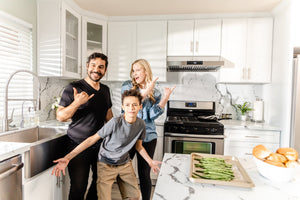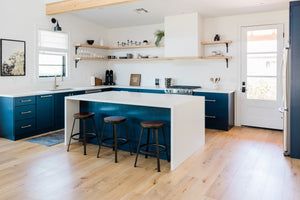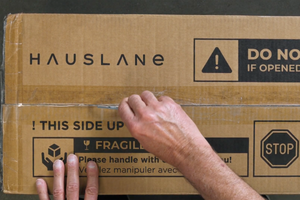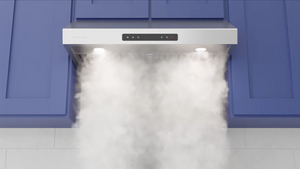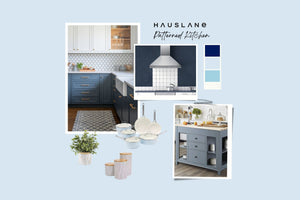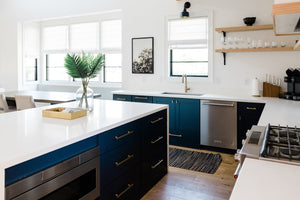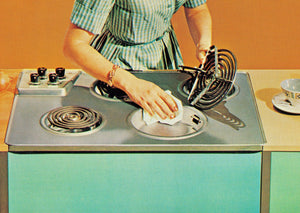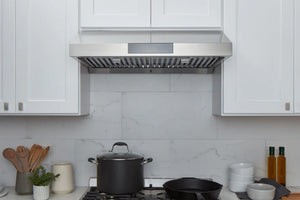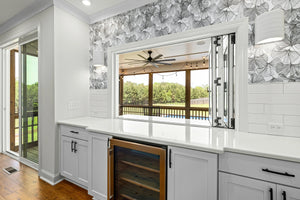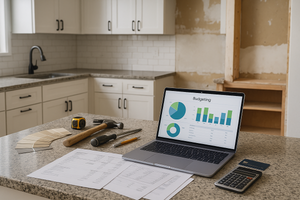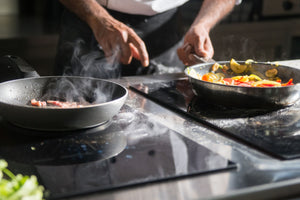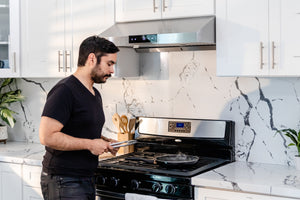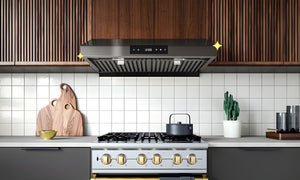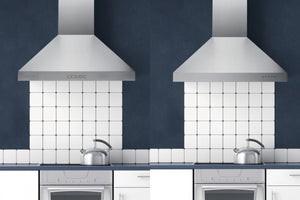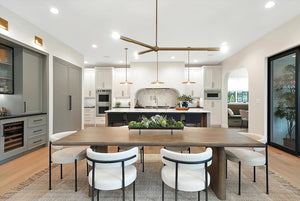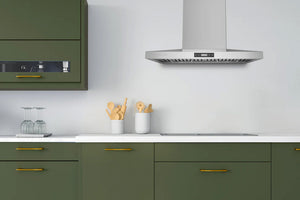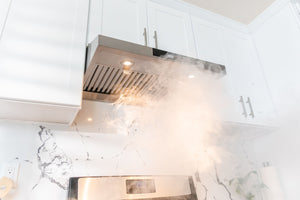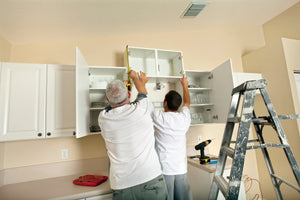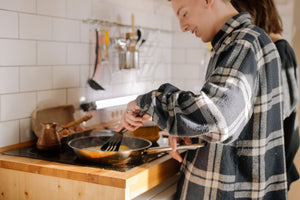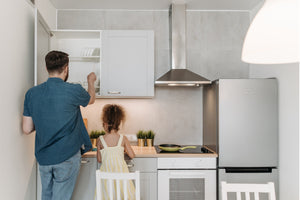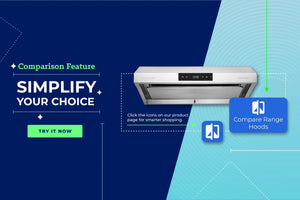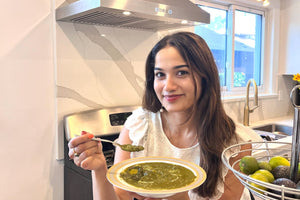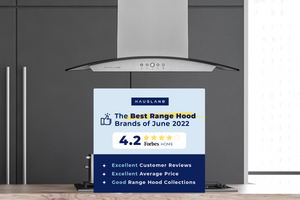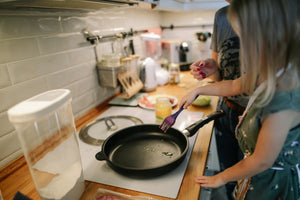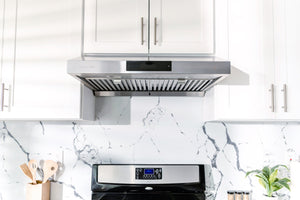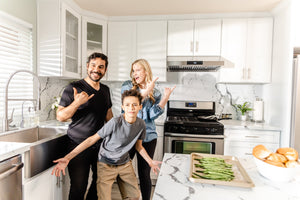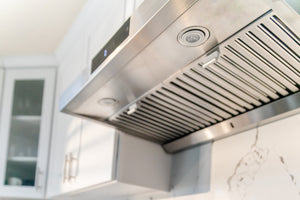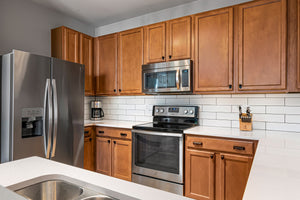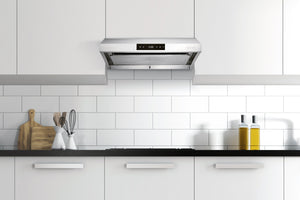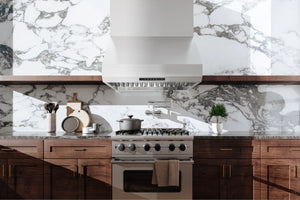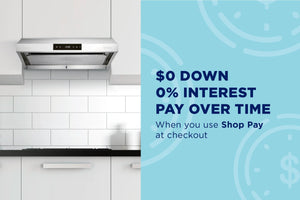TIPS & GUIDES
Range Hood Style and Size
How To Determine What Size and Type of Range Hood You Need
By Hauslane ∙ 5 mins read
The average person spends at least an hour each day preparing and cooking meals in their kitchen. In many homes, the kitchen isn’t just a place where meals are made. It’s where memories are created and fun times are shared. All that time spent prepping, cooking, eating, and just spending time together does have a downside: the mess. If you’ve ever walked into the kitchen smelling last night’s delicious steak meal, you know exactly how pungent lingering odors, grease, and fumes can be.
Luckily, there’s an unsung hero in your kitchen that can help you suck away odors, fumes, and grease before they do any damage.
Shop Range Hoods
From HAUSLANE
Why Kitchen Ventilation Is an Absolute Must
This workhorse of an appliance isn’t a simple fan. It’s a ventilation system that removes toxic chemicals, improves air quality, and keeps your kitchen clean. Kitchen ventilation matters more than most people realize. Without a range hood, you’d have to deal with breathing in cooking fumes and polluted air after every meal. These fumes would seep into your walls and leave grease stains around your kitchen. With a proper kitchen range hood, you can minimize the grease and oil left over after cooking, making for a cleaner kitchen. Hauslane will gladly help you determine what size range hood you need.
Cooking fumes aren’t just unpleasant; they can also be harmful to your health. Breathing in these fumes can irritate your eyes, nose, and throat. Research also indicates that cooking fumes contain known carcinogens, which can cause cancer. There’s also the risk of carbon monoxide poisoning. Using the stove without a range hood can lead to increased levels of carbon monoxide.
So, the range hood is essential to improving the air quality of your kitchen. The appliance sucks away odors, smoke, fumes, grease, and pollutants that are released into the air while cooking. Range hood style can vary: If your kitchen has ductwork, the range hood will direct the polluted air outside. If you don’t have ductwork in your kitchen, then, the air will go through charcoal filters to trap grease particles and clean the air. The air is then re-circulated back into the kitchen. We recommend running ductwork if possible for the best ventilation. Finding the right size of kitchen hood is important for providing you with clean air. If you’re wondering, “what size range hood do I need?”, we’re help to help you decide.
Range hoods also protect your investment in your home by preventing stains and odors on your cabinets, flooring, walls, and countertops. Without a range hood, your kitchen would turn yellow and foul-smelling fast.
In other words: if you’re going to cook, you need a range hood. If you want to keep your kitchen nice, you need a range hood. If you want to keep your air quality healthy, you need a range hood.
A Word on Today’s Range Hoods
Range hood styles have evolved significantly over the years. So, how do you know what type of range hood to buy and what size will work best for your cooking needs? Great question. First, know the range hoods of today aren’t the same as the clunky, oversized models of the past. They’ve come a long way!
You can find understated models like built-in hoods that let your decor do the talking. Or go for wall mount or under cabinet range hoods that make a statement and serve as a focal point in your kitchen. Whether you want something modern, contemporary, or timeless, you’ll find an option that suits your style.
At Hauslane, you can choose from a variety of range hood sizes to fit your kitchen. We offer both 30-inch range hoods and 36-inch range hoods, which are the most ideal for kitchens.
First, Know Your Cooking Style
The best way to determine which type and what size of range hood you need is to know your cooking style. As you think about your current cooking style, ask yourself these questions:
✦ How often do you cook and for how long?
✦ Do your cooking methods produce a little bit, an average amount, or a lot of heat and smoke?
✦ Do you want to explore different cooking methods in the future?
✦ Or are do you prefer to keep your time in the kitchen to a minimum?
At Hauslane, we divide cooking styles into 3 tiers:
Tier 1-The 15-Minute Dinner Fan: You love delicious meals but prefer to spend your free time outside of the kitchen. You can whip up a simple meal on occasion and prefer the ease of canned goods, one-pot recipes, and dump dinners. You need a range hood that’s suitable for light cooking, heat, and smoke; boiling, steaming, poaching.
Examples: UC-B018SS, WM-600, UC-PS16
Tier 2- The Everyday Cooking Whiz: You cook just about as much or more than you order out. You have your favorite recipes on deck. You need a range hood that’s built for everyday cooking, typical levels of heat and smoke, boiling, steaming, poaching, braising.
Examples: UC-C100, UC-C400, WM-530
Tier 3- The Home Chef: You’re a real home chef who enjoys making delicious dishes and loves trying out new recipes from time to time. You need a range hood that can keep up with heavy-duty cooking, high levels of heat, and smoke, plus boiling, steaming, poaching, braising, frying, searing, and sauteing.
Hey, What About CFM?
You might be wondering what level of CFM you need for your range hood. Here’s the deal; suction power does matter when it comes to finding the right range hood. But there’s no real standard for CFM. How each manufacturer measures and advertises CFM varies greatly depending on their set of standards, testing environment, lab, kitchen setup, venting, and windows.
You could even test the same range hood in the same kitchen and change an element (such as closing a window) and get a different CFM reading. You may find range hoods rated 500 CFM perform better than range hoods rated at 850 CFM, or even 1,000 CFM! So, we recommend selecting your range hood based on your cooking needs. That way, you can ensure your range hood works with your kitchen.
Measure to Determine What Size Range Hood You Need
While there are many different styles of range hoods available in each cooking style tier, you do need to make sure the model will fit your space first. Generally, we recommend starting out by measuring your range top. We like for the range hood to at least match the dimensions of the range top. Be sure to factor in the ventilation hood. If your range top is 30 inches wide, go for a ventilation hood that’s 36 inches wide. That way, you’ll have an even overhang of 3 inches on each side.
You always want your range hood to cover as much space over your range top as possible. That way, it can catch grease and fumes efficiently. Just make sure the range hood does not stick out so far that it becomes a hazard or gets in the way. Our UC-PS38 model uses a perimeter suction design to create a suction zone around the cooking area so no grease can escape.
We recommend leaving 24 to 30 inches of space between the bottom of the range hood and the cooking surface. This is the sweet spot for getting the best performance and keeping any heat away from electrical components. Any closer, and you’ll risk a fire. Any farther away and your range hood won’t work as it should. Please check with your local building codes.
When determining what size of range hood you need, you’ll also need to consider the amount of space you have above your range top. Take note of the distance from the range top to the ceiling. This will help you determine the amount of height between your range hood and cooktop.
Jot down the remaining amount of space left over to your ceiling if you have a chimney hood model. Most chimney range hoods are designed to accommodate standard ceilings, around 8 feet. If you have high ceilings, you can simply purchase an extension kit to accommodate ceilings up to 10 feet. Unfortunately, not too many brands out there have extensions available. At Hauslane, we have an extension kit for every model. Before installation, always review the manufacturer’s requirements for mounting height.
Once you install your range hood, you’ll be well on your way to enjoying a brand new cooking experience! Stay tuned to the Hauslane blog for even more tips and tricks. For more information on finding the ideal range hood you need, get in touch with Hauslane today.




